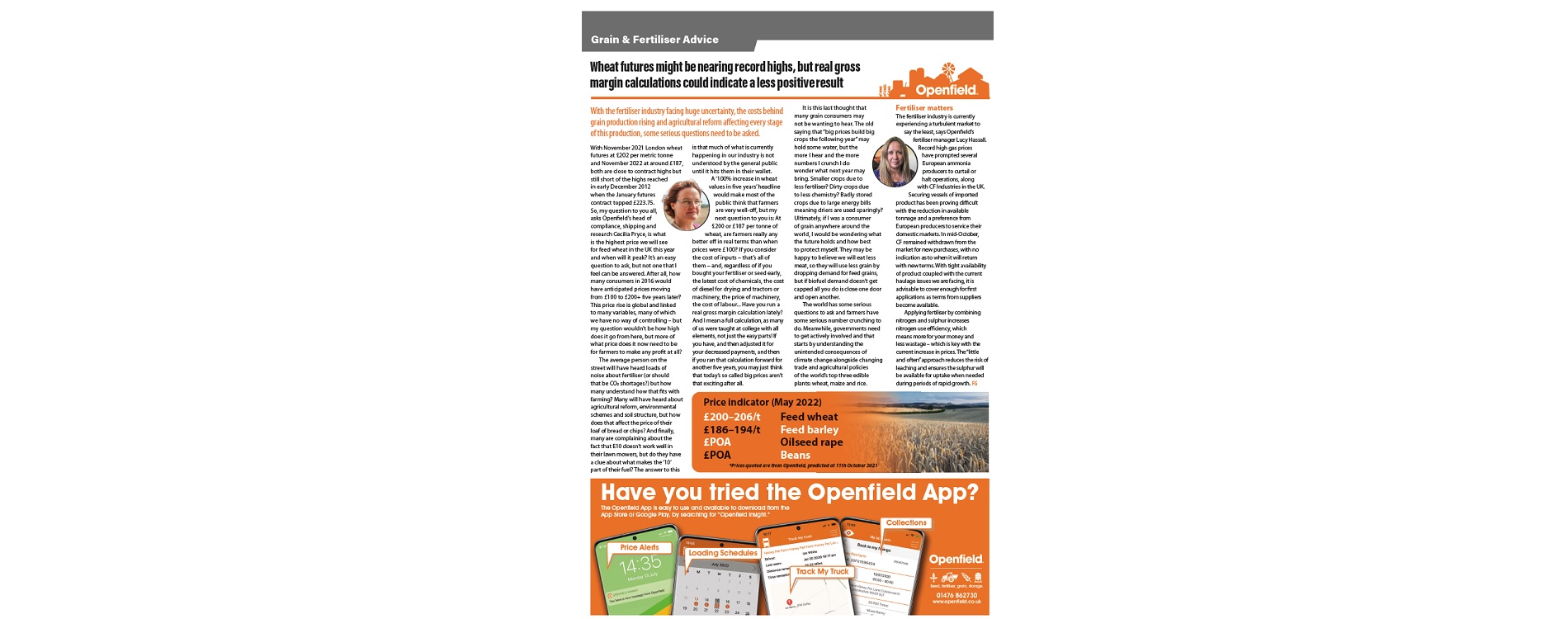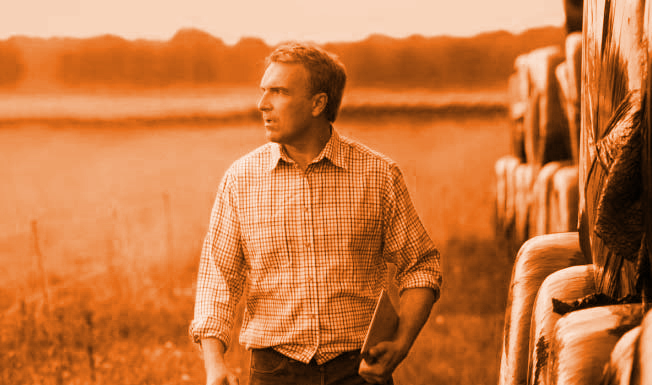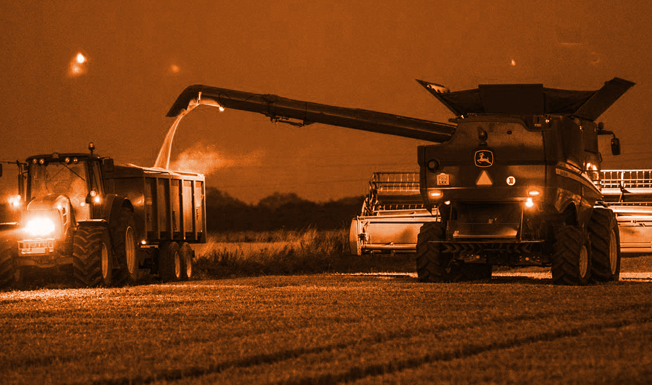Wheat futures might be nearing record highs, but real gross margin calculations could indicate a less positive result
With the fertiliser industry facing huge uncertainty, the costs behind grain production rising and agricultural reform affecting every stage of this production, some serious questions need to be asked.
With November 2021 London wheat futures at £202 per metric tonne and November 2022 at around £187, both are close to contract highs but still short of the highs reached in early December 2012 when the January futures contract topped £223.75. So, my question to you all, asks Openfield’s head of compliance, shipping and research Cecilia Pryce, is what is the highest price we will see for feed wheat in the UK this year and when will it peak? It’s an easy question to ask, but not one that I feel can be answered. After all, how many consumers in 2016 would have anticipated prices moving from £100 to £200+ five years later? This price rise is global and linked to many variables, many of which we have no way of controlling – but my question wouldn’t be how high does it go from here, but more of what price does it now need to be for farmers to make any profit at all? The average person on the street will have heard loads of noise about fertiliser (or should that be CO2 shortages?) but how many understand how that fits with farming? Many will have heard about agricultural reform, environmental schemes and soil structure, but how does that affect the price of their loaf of bread or chips? And finally, many are complaining about the fact that E10 doesn’t work well in their lawn mowers, but do they have a clue about what makes the ‘10’ part of their fuel? The answer to this is that much of what is currently happening in our industry is not understood by the general public until it hits them in their wallet. A ‘100% increase in wheat values in five years’ headline would make most of the public think that farmers are very well off , but my next question to you is: At £200 or £187 per tonne of wheat, are farmers really any better off in real terms than when prices were £100? If you consider the cost of inputs – that’s all of them – and, regardless of if you bought your fertiliser or seed early, the latest cost of chemicals, the cost of diesel for drying and tractors or machinery, the price of machinery, the cost of labour… Have you run a real gross margin calculation lately? And I mean a full calculation, as many of us were taught at college with all elements, not just the easy parts! If you have, and then adjusted it for your decreased payments, and then if you ran that calculation forward for another five years, you may just think that today’s so called big prices aren’t that exciting after all.
It is this last thought that many grain consumers may not be wanting to hear. The old saying that “big prices build big crops the following year” may hold some water, but the more I hear and the more numbers I crunch I do wonder what next year may bring. Smaller crops due to less fertiliser? Dirty crops due to less chemistry? Badly stored crops due to large energy bills meaning driers are used sparingly? Ultimately, if I was a consumer of grain anywhere around the world, I would be wondering what the future holds and how best to protect myself. They may be happy to believe we will eat less meat, so they will use less grain by dropping demand for feed grains, but if biofuel demand doesn’t get
capped all you do is close one door and open another.
The world has some serious questions to ask and farmers have some serious number crunching to do. Meanwhile, governments need to get actively involved and that starts by understanding the unintended consequences of climate change alongside changing trade and agricultural policies of the world’s top three edible plants: wheat, maize and rice.
Fertiliser matters
The fertiliser industry is currently experiencing a turbulent market to say the least, says Openfield’s fertiliser manager Lucy Hassall. Record high gas prices have prompted several European ammonia producers to curtail or halt operations, along with CF Industries in the UK. Securing vessels of imported product has been proving difficult with the reduction in available tonnage and a preference from European producers to service their domestic markets. In mid-October, CF remained withdrawn from the market for new purchases, with no indication as to when it will return with new terms. With tight availability of product coupled with the current haulage issues we are facing, it is advisable to cover enough for first applications as terms from suppliers become available.
Applying fertiliser by combining nitrogen and sulphur increases nitrogen use efficiency, which means more for your money and less wastage – which is key with the current increase in prices. The “little and often” approach reduces the risk of leaching and ensures the sulphur will be available for uptake when needed during periods of rapid growth.




